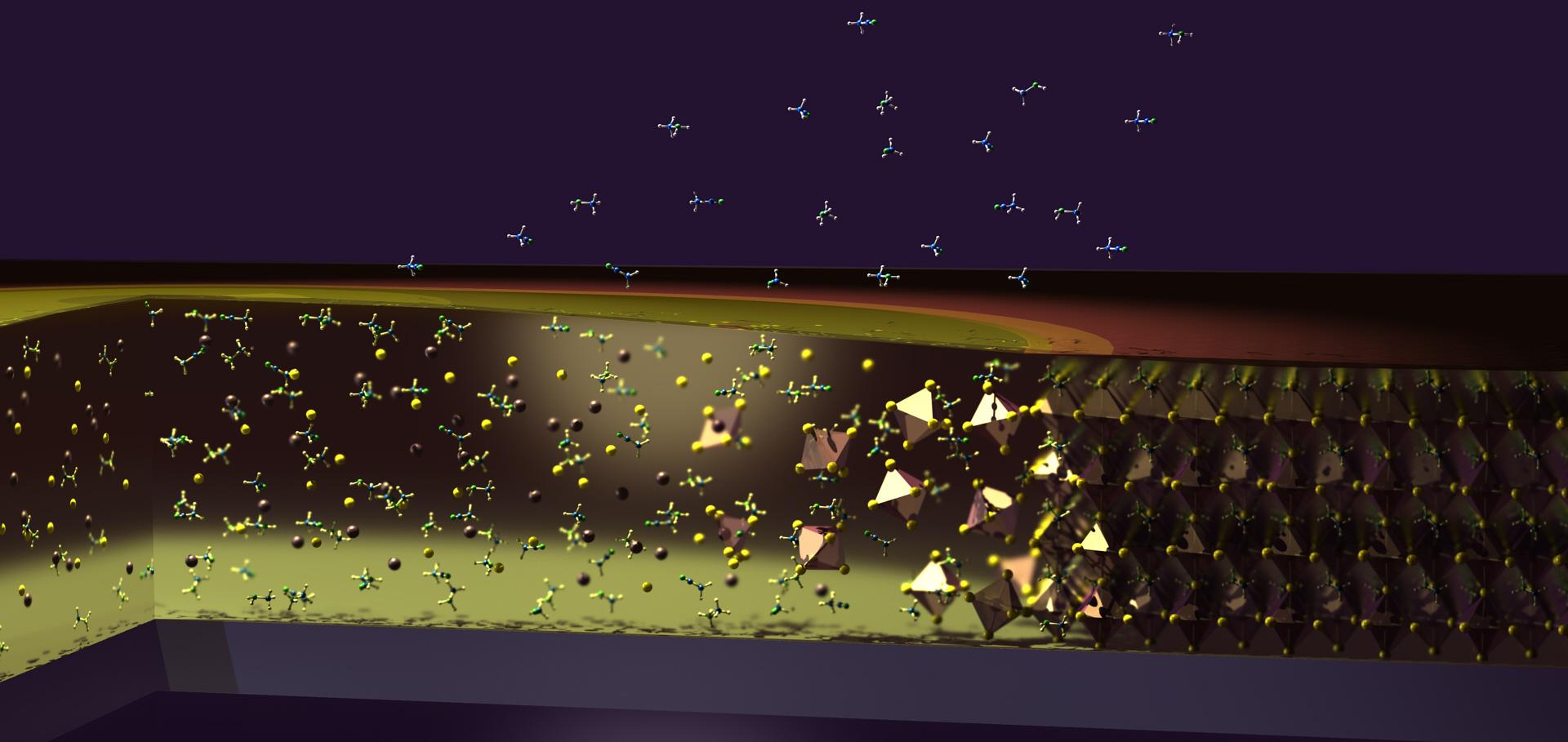Crystalline Nature of Colloids in Methylammonium Lead Halide Perovskite Precursor Inks Revealed by Cryo-Electron Microscopy
The Journal of Physical Chemistry Letters American Chemical Society (ACS) 11:15 (2020) 5980-5986
Ultraviolet Photoemission Spectroscopy and Kelvin Probe Measurements on Metal Halide Perovskites: Advantages and Pitfalls
Advanced Energy Materials Wiley 10:26 (2020)
(Invited) Carbon Nanotubes As an Effective and Stable p-Type Contact for Perovskite Solar Cells
ECS Meeting Abstracts The Electrochemical Society MA2020-01:5 (2020) 610-610
Light absorption and recycling in hybrid metal halide perovskites photovoltaic devices
Advanced Energy Materials Wiley 10:10 (2020) 1903653
Abstract:
The production of highly efficient single‐ and multijunction metal halide perovskite (MHP) solar cells requires careful optimization of the optical and electrical properties of these devices. Here, precise control of CH3NH3PbI3 perovskite layers is demonstrated in solar cell devices through the use of dual source coevaporation. Light absorption and device performance are tracked for incorporated MHP films ranging from ≈67 nm to ≈1.4 µm thickness and transfer‐matrix optical modeling is utilized to quantify optical losses that arise from interference effects. Based on these results, a device with 19.2% steady‐state power conversion efficiency is achieved through incorporation of a perovskite film with near‐optimum predicted thickness (≈709 nm). Significantly, a clear signature of photon reabsorption is observed in perovskite films that have the same thickness (≈709 nm) as in the optimized device. Despite the positive effect of photon recycling associated with photon reabsorption, devices with thicker (>750 nm) MHP layers exhibit poor performance owing to competing nonradiative charge recombination in a “dead‐volume” of MHP. Overall, these findings demonstrate the need for fine control over MHP thickness to achieve the highest efficiency cells, and accurate consideration of photon reabsorption, optical interference, and charge transport properties.Elucidating the Role of a Tetrafluoroborate‐Based Ionic Liquid at the n‐Type Oxide/Perovskite Interface
Advanced Energy Materials Wiley 10:4 (2020)


